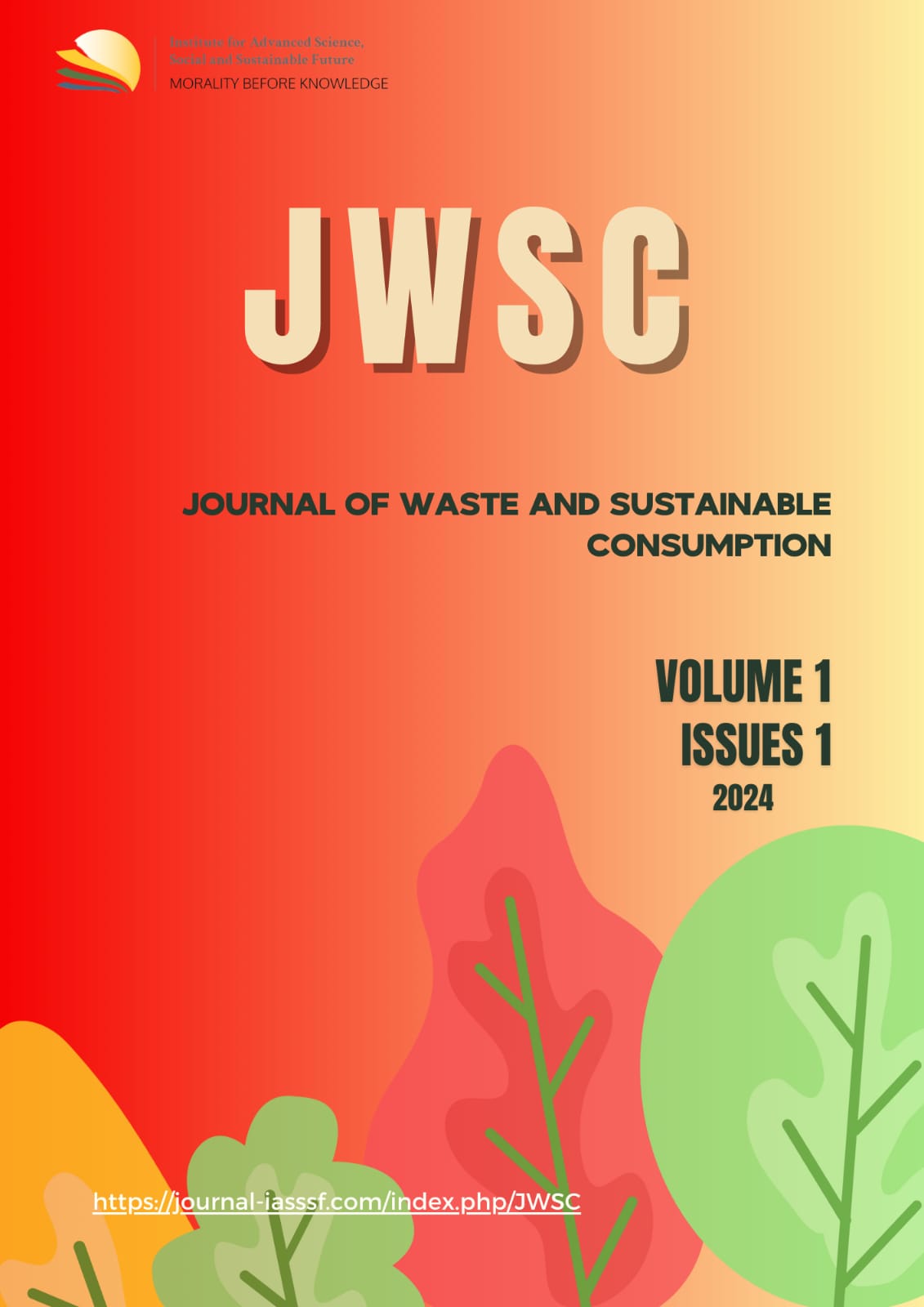Sustainable consumption and production in the clothes industry to reduce the effect of climate change
DOI:
https://doi.org/10.61511/jwsc.v1i1.2024.666Keywords:
carbon footprint; climate change; fashion industry; fast fashion; sustainable fashion.Abstract
Background: Climate change is undoubtly can not be resisted. The impacts of climate change are becoming more and more evident in front of our eyes, with increasing hydrological disasters. On the one hand, fashion is one of the largest contributors to carbon emissions in the world, especially after the fast fashion trend. Therefore, further study how to make fashion more sustainable should be done and implemented. By thus, in this journal want to answering the question what should the production side act to be more sustainable in produce textile & clothes regarding to reduce effect of climate change and from the consumers perspective side, how the consumers contribute regarding to reduce bad effect of fashion for climate. Methods: By using descriptive qualitative method in the form of collecting and compiling the results of the literature, analyzing the results of the literature, and interpreting the results of the literature based on topic relating to the title of the article. Findings: The result was some kind changing in the production side should be done such as, changing used electricity,used of dye, altered the material and made circular fashion industry, and for consumer there are some alternative thing that could be done such as buy ethical brand, buy second hand, and shopping less. Conclusion: By this reseach finding, so hopefully for further act should be done by collaboration between all key player toward fashion industry.
References
Omanski, S. (2020, March 30). How Do Carbon Emissions Affect the Environment?. Greenmatters. https://www.greenmatters.com/p/how-do-carbon-emissions-affect-environment
Trenberth, K. E. (2018). Climate change caused by human activities is happening and it already has major consequences. Journal of energy & natural resources law, 36(4), 463-481. https://www.tandfonline.com/doi/pdf/10.1080/02646811.2018.1450895?casa_token=de9XGRFLf-gAAAAA:DDYiXf_0mbVgapUw-7ZHowXwMnckr-_fCDaziW2Pd5QfTSQXV6072F7yJdTDvidA-g2vRA66j9jOyW
JACKSON, U., Xu, B., & NKUSI, R. (2021). Investigating the Impact of climate change on the hunger crisis in Rwanda. Case Study: Bugesera district. International Journal of Scientific and Research Publications, 11, 152-167. https://www.researchgate.net/profile/Jackson_Uwabimfura/publication/368029745_Investigating_the_Impact_of_climate_change_on_the_hunger_crisis_in_Rwanda/links/656764bab86a1d521b1b86bb/Investigating-the-Impact-of-climate-change-on-the-hunger-crisis-in-Rwanda.pdf
Sorensen, C., Murray, V., Lemery, J., & Balbus, J. (2018). Climate change and women's health: Impacts and policy directions. PLoS medicine, 15(7), e1002603. https://doi.org/10.1371/journal.pmed.1002603
Auffhammer, M. (2018). Quantifying economic damages from climate change. Journal of Economic Perspectives, 32(4), 33-52. https://pubs.aeaweb.org/doi/pdf/10.1257/jep.32.4.33
Joshi, I. & Athalye, A. (2021). Carbon Footprint in Textile Industry. Journal of Textile and Clothing Science, 9-14.
Kodžoman, D. (2019). The psychology of clothing: Meaning of colors, body image and gender expression in fashion. Textile & leather review, 2(2), 90-103. https://hrcak.srce.hr/file/322338
Shinta, F. (2018). Kajian fast fashion dalam percepatan budaya konsumerisme. Jurnal Rupa, 3(1), 62-76. https://journals.telkomuniversity.ac.id/rupa/article/download/1329/901
Jacometti, V. (2019). Circular economy and waste in the fashion industry. Laws, 8(4), 27. https://doi.org/10.3390/laws8040027
Kemenperin RI. (2019, 6 May). Industri Pakaian Jadi Catatkan Pertumbuhan Paling Tinggi. BERITA INDUSTRI. https://kemenperin.go.id/artikel/20641/Industri-Pakaian-Jadi-Catatkan-Pertumbuhan-Paling-Tinggi
Chen, X., Memon, H. A., Wang, Y., Marriam, I., & Tebyetekerwa, M. (2021). Circular Economy and sustainability of the clothing and textile Industry. Materials Circular Economy, 3, 1-9. https://link.springer.com/content/pdf/10.1007/s42824-021-00026-2.pdf
Ritchie, H., Rosado, P., & Roser, M. (2020). Emission by Sector: where do greenhouse gases come from?. OurWorldInData. https://ourworldindata.org/emissions-by-sector
Joshi, I. (2021). CARBON FOOTPRINT IN TEXTILE INDUSTRY. Journal of Textile and Clothing Science, 1-14.
Akter, S., Ji, X., Sarker, M. M., Cai, L., Shao, Y., Hasan, M. K., ... & Quan, V. (2019). Clean manufacturing and green practices in the apparel supply chain. Open Journal of Business and Management, 8(1), 104-113. https://doi.org/10.4236/ojbm.2020.81007
Ramasamy, R., & Subramanian, R. B. (2021). Synthetic textile and microfiber pollution: a review on mitigation strategies. Environmental Science and Pollution Research, 28(31), 41596-41611. https://link.springer.com/content/pdf/10.1007/s11356-021-14763-z.pdf
Guo, S., Li, X., Zhao, R., & Gong, Y. (2021). Comparison of life cycle assessment between lyocell fiber and viscose fiber in China. The International Journal of Life Cycle Assessment, 26, 1545-1555. https://link.springer.com/content/pdf/10.1007/s11367-021-01916-y.pdf
Moorhouse, D. (2020). Making fashion sustainable: Waste and collective responsibility. One Earth, 3(1), 17-19. https://www.cell.com/one-earth/pdf/S2590-3322(20)30308-0.pdf
Speranskaya, O., Caterbow, A., HEJSupport, Buosante, V. A., Adan, H., mutsaers, M., Karkee, R., Ciu, A., Denwood, D., Gorial, M., Geerts, A., Allers, S., Bles, R., Malhotra, D. D. (2018). The Sustainability of fashion What Role can Consumers play?. Health and Environment Justice Report Support International. https://hej-support.org/wp-content/uploads/2018/06/HEJ_Sustainable-textiles.pdf
Downloads
Published
Issue
Section
Citation Check
License
Copyright (c) 2024 Journal of Waste and Sustainable Consumption

This work is licensed under a Creative Commons Attribution 4.0 International License.













